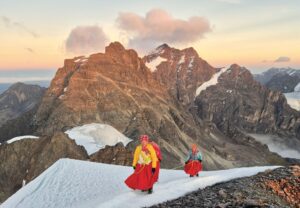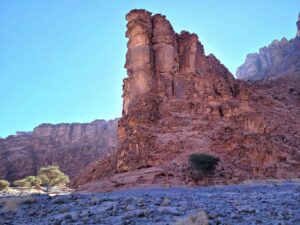“You won’t see any other souls on the island except for little auks and puffins,” observed the Icelandic fisherman who dropped me off at Krossbukta Bay on the west coast of Jan Mayen.
The fellow was correct. As I began wandering north along a seemingly endless beach, I didn’t encounter a single beachgoer. Which isn’t surprising, since Jan Mayen is an island far to the north of Iceland, far to the east of Greenland, and thus decidedly remote. Its only human inhabitants are a handful of Norwegians who occupy a weather station on the other side of this 377 sq km, Norway-owned island.
Right away I saw drift logs from Siberian rivers scattered all over the beach. Transported around the High Arctic by the clockwise Beaufort Gyre and the somewhat erratic Transpolar Drift, they’d been shuttled south to these parts by the strong East Greenland Current. The journey from Siberia to Jan Mayen might take 10 years or longer, but the logs don’t seem to mind, for they looked perfectly fit.
I alternately circumnavigated and hopped over these myriad drift logs as I headed toward Atlantic City. Atlantic City? Was I going to venture all the way to New Jersey? Stay tuned…
In addition to little auks and puffins, the basaltic cliff adjacent to the beach hosted a large population of fulmars, kittiwakes, and black guillemots. Living birds nested in these cliffs, and a remarkable number of dead birds lay in rest on the beach itself. Their frail cages were flexed at grotesque angles, and many of their bleached beaks were wide open as if they wanted to breathe the island’s pristine arctic air even in death. The mingling of these avian corpses with drift logs lying askew, isolated, or piled high made me feel like I was wandering through a work of surrealist art.

Photo: Lawrence Millman
At one point I saw an eider duck seated contentedly on her nest, with her
brownish-grey down giving her eggs an exceptional degree of warmth. I approached her, and she gazed at me with only the slightest interest, as if her eggs were what mattered to her, not a certain meddlesome hominid. “Sorry to
be a nuisance, dear,” I said to her as I slowly backed away.
At another point, I saw a stone epitaph atop a ridge. Might this be a memorial to someone who had failed to reach Atlantic City? I had no way of knowing since the name and dates on the stone were camouflaged by a greenish-yellow crustose lichen. No matter. Lichens are probably the dominant life form in the Arctic, so it seemed appropriate that data on a grey rock should be replaced by one of them…and a quite attractive one at that.
In the distance, I could see the towering stratovolcano Beerenburg, which at 71˚N is the world’s northernmost active volcano. Witnessing Beerenburg from his curragh-like boat, the Irish monk St. Brendan the Navigator thought its giant plumes of ash indicated a throng of hyper-active blacksmiths working on the summit. Myself, I thought these plumes were gesturing me not to go any further, lest I end up blanketed by volcanic ash.

Beerenburg volcano. Photo: Shutterstock
This last speculation inspired me to look at my watch. I’d been walking for six hours, and it was now time for me to head back to where the fisherman had dropped me off since he said he would pick me up in around twelve hours. As it happened, I wasn’t upset that I hadn’t made it to Atlantic City, which was not, definitely not, a casino-ridden resort city with a lengthy boardwalk. Rather, it was an abandoned American radio and weather station from the Second World War. From what I’d read, it now consisted only of a few ruined barracks and an even more ruined sauna. An interesting destination this might have been, but it’s the journey, not the destination that matters.
So it was that I began walking back to Krossbukta Bay with a certain pleasure in my steps even as I hopped over drift logs. Especially as I hopped over drift logs.






